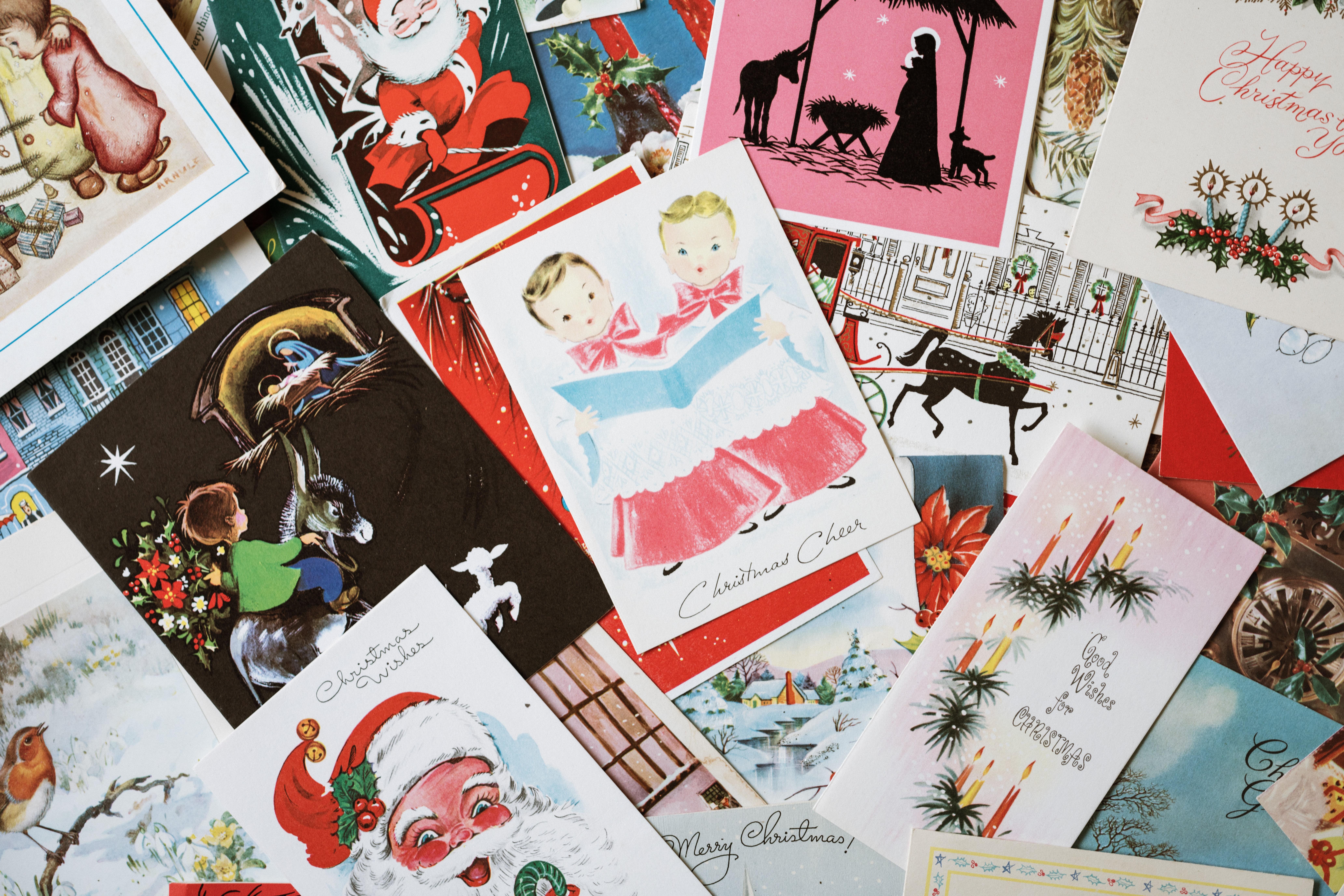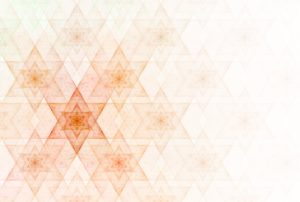CELEBRATING THE SEASON MEANS SOMETHING DIFFERENT TO EACH OF US. WE ASKED SOME LOCALS TO SHARE THEIR THOUGHTS ABOUT THE THREE HOLIDAYS CELEBRATED DURING THIS FESTIVE TIME OF YEAR.
No matter which you observe—Christmas, Hanukkah or Kwanzaa—or another holiday tradition, there is no better way to celebrate than by ringing in the season with hearts full of love for our families and offering true kindness and compassion to others.

WHAT HANUKKAH MEANS TO ME… Illumination of the House HANUKKAH IS A HOLIDAY THAT BRINGS TOGETHER FOOD, FAMILY, GIFTS, GAMES AND LIGHT.
By James Blevins

Hanukkah, or “Festival of Lights,” is a Jewish holiday observed for eight days, starting on the 25th day of Kislev on the Hebrew calendar, occurring any time from late November to late December. This year’s observation began November 28th and culminates December 6th. The festival requires the lighting of nine candles on a candelabrum, or menorah. One of the nine branches stands above or below the others and is called the shamash, or “attendant,” and is often used to light each candle for each day of the holiday. Other popular Hanukkah festivities include singing special songs like Ma ’oz Tur, playing the game of dreidel and eating oil-based foods such as latkes and sufganiyot. Hanukkah commemorates the victory of a group of Jewish people called the Maccabees after they rose up against their Greek-Syrian oppressors, liberated Jerusalem and rededicated their second temple, rebuilding its altar and lighting its menorah. Among secular Jews, Hanukkah has attained cultural significance in the United States and elsewhere due to it occurring around the same time as Christmas. Brent Malever, 82, a former Ocala City Councilman, was born and raised in Ocala. His grandfather was among some of the first Jewish families to settle in Marion County in 1905 and opened a clothing store in Ocala. “We’re four generations in Ocala,” says Malever. Hanukkah is a happy time for Malever and his family because of the pleasure he gets from seeing his children and grandchildren enjoying the holiday. He says it isn’t just the religious aspects he and his family love but how Hanukkah is celebrated at home and emphasizes what makes a home special for each practicing family. According to the Talmud, the Maccabees successfully revolted against Antiochus IV Epiphanes and the temple was purified and the wicks of the menorah miraculously burned for eight days, even though there was only enough sacred oil for one day. Foods baked in oil, preferably olive oil, commemorate the miracle of a small flask of oil keeping the menorah alight. “It’s traditional to eat potato latkes and jelly donuts,” Malever says, adding that his wife makes the best he’s ever tasted. “We decorate the house and we light the candles each night.” Malever says he and his wife say a prayer over each candle during the lighting ceremony. According to tradition, candles usually burn for at least half an hour after it gets dark. Typically, two blessings, or brachot, are recited when lighting the candles. The reason for the Hanukkah lights is not for the lighting of the house within, but rather for the illumination of the “house without,” he explains, so each passerby can see the light and be reminded of its miracle. “It’s a special holiday,” he declares. “And our family always looks forward to celebrating it. Who wouldn’t enjoy a holiday filled with family, food, gifts and games?” Dr. Harvey Taub, 58, a urologist at the Advanced Urology Institute in Ocala, says Hanukkah represents right over might, religious freedom and the unbroken chain of thousands of years of Jewish heritage and traditions. “Hanukkah means ‘dedication,’” explains Taub. “My ancestors kept their traditions alive; and without the historic events that mark Hanukkah, Judaism would have been wiped out. The Greeks would have felt that they could have done anything to anybody.”
WHAT CHRISTMAS MEANS TO ME… Lighting Up the Season
FOR THE 31ST TIME, LAURA MAE HUNT WILL SWITCH ON HER 100,000-PLUS LIGHT CELEBRATION OF CHRISTMAS DURING THE FIRST WEEKEND IN DECEMBER.
By Leah A. Taylor

Laura Mae Hunt, a decorating hobbyist, never planned to create a holiday extravaganza but that’s what she’s done with “Hunt’s Christmas Haven.” In December 1990, after she and her husband Johnny built their home, she started decorating inside and out with a few decorations from a hardware store and her first live tree. The following year, she added items and began inviting family members and coworkers to see her winter wonderland with glittering lights and rows of figures in their holiday finest. Over the years, she has added a room of miniature holiday village displays, with joyful children spinning round and round, skaters in vintage apparel gliding by, skiers descending snowy slopes, a train weaving its way through the finery and Santa and his reindeer flying by, all thanks to an array of animated novelties. Hunt recalls guests said she was doing too much for “no one but them to see,” so she began opening her doors for house tours. Camera-laden crowds gathered, along with community leaders and carolers, and it all transformed into a dazzling annual affair.The production is no easy feat. Each light on the roof, Hunt puts there. She curates each display with care. The house, yard and driveway are festooned in lights, so many in fact one imagines the view is an enchanting sight for passengers on planes traveling to and from the nearby Ocala airport…or from the driver’s seat of a sleigh pulled by eight reindeer. A multitude of animated amusements keep the action in a state of perpetual motion. “In Florida, we may not have snow,” she says joyfully, gesturing to one illuminated icon among the outdoor displays, “but we have palm trees!” The nearly 70-year-old begins decorating in what she calls the “Ber” months—September through November. Johnny sets all the materials close to the house and Hunt goes to work. “I work from the time I put it up, until the time it comes down,” she explains. “But I love every minute of it. To me, it’s so special.” Her passion landed her on ABC’s Great Christmas Light Fight in 2015, an opportunity initiated by her daughter. For the filming, Hunt hung lights in humid August, maintaining bulb changes through December. She confesses to having more money wrapped up in Christmas decorations than in the value of her home. She says she lost 20 years of vacation time while curating the show, making sure guests were out of her home by 9pm so she could travel to work in Crystal River by 11pm. It was a routine she kept until she had enough seniority to take December off. “That’s how special decorating for Christmas is to me,” she shares. “I have gotten so many compliments. I do it because it just touches people.” However, Hunt is quick to share, “It was never about the attention.” At the center of the celebration is Jesus, whose name crowns the roof of the house. “It’s not so much about all the decorations, but recognizing He is who he is and the reason for the season,” she states. “We should always remember that.” In 2015, Hunt stopped offering inside tours but still enjoys giving toys to children who come to visit the outside displays, which include nativity scenes, icicle arches, illuminated Santas, snowmen, reindeer, caroling mice and even Snoopy and Woodstock. When she sees “little heads bobbling along the fence line,” she walks out to mingle. She hopes to reopen inside home tours in the future because, “There are so many new people who have seen the outside but have no clue what the inside is like.” Until then, visitors can stroll by 1670 NW 73rd Terrace for Hunt’s seasonal spectacle.
On Christmas Eve, the Reverend Mary Delancey, like Hunt, will celebrate the birth of Christ. Delancey will do so at her church’s annual service. “Christmas is a time of love,” she says. “We celebrate God’s great love for us in His gift of our Savior, Jesus Christ. The Christmas Eve service contains for me all that is Christmas—worshipping God with thanksgiving and praise alongside the people in Ocala who mean the most to me.”

WHAT KWANZAA MEANS TO ME…
Rooted in History
THE OBSERVATION OF KWANZAA PAIRS PRINCIPLES AND SYMBOLS TO CELEBRATE AFRICAN CULTURE AS IT BUILDS COMMUNITY.
By Susan Smiley-Height
Kwanzaa is observed from December 26th through January 1st each year, but the tenets often imbue the lives of participants every day of the year. Kwanzaa was created by Maulana Karenga, professor of Black Studies at California State University, Long Beach, in 1966. The name is from matunda ya kwanza, or “first fruits” in Swahili. The seven principles, or nguzo saba, are values of African culture that contribute to building and reinforcing community. They include umoja (unity), kujichagulia (self-determination), ujima (collective work and responsibility), ujamaa (cooperative economics), nia (purpose), kuumba (creativity) and imani (faith). There are symbols associated with each principle. Kwanzaa ends with reflection and recommitment.“It’s about self-empowerment and upliftment of understanding more cultural awareness of the history of African Americans,” offers TeSha Jackson, a senior club director of the Boys & Girls Club of Marion County. “Though we acknowledge it during December, it’s something you instill in your everyday life. It’s how you deal with people, look at yourself and handle circumstances and situations. It has given me deep personal examination of myself.”
Jackson began observing Kwanzaa with her children in the early 1990s. “As soon as Christmas ended, Kwanzaa started,” she recalls. “I had my Kwanzaa display and when they woke up, I would say ‘Habari gani?’ or ‘What is the news?’ and the answer was the principle for that day and what it stands for.” As Jackson began to share Kwanzaa through community presentations at the three local Boys & Girls Clubs, Lillian Bryant Community Center and the E.D. Croskey Recreation Facility, she became known as “the Kwanzaa Lady.” She says it’s important for youth to understand the principles and symbols, including hearing words spoken in Swahili. At the Boys & Girls Club, one key element is teaching children to make gifts, or zawadi, to share. She encourages them to use their hands to make things like paper boxes that can be colored with the bright red, green and black hues of the African flag. “I’ve also done quilts, where kids learn to sew,” she recalls, “as well as painting, crafts, beads, bracelets, earrings… things they can give to others. They always have fun.” And, she adds, “We don’t overshadow any holiday over another. At the Boys & Girls Club, we acknowledge many different areas of cultural awareness so kids are not biased.” Marcy Owens has observed Kwanzaa for many years in Ocala, sharing her knowledge through family, her sorority and churches. She believes it is important younger generations know about “the significant life sacrifices that were made by their African American ancestors.” “Many of the freedoms they enjoy now were not always available to Black Americans,” she offers. “Knowing your history gives you a greater sense of pride and respect, not only for yourself but for those around you. Kwanzaa is a time for renewal, focus, reflection and evaluation in one’s own life and your community.” “The principles allow me to reflect over the past year and see if I followed through in my life’s mission to make this world a better place. When I say world, I speak of what makes up my world, where I live, work and play,” she adds. “I have often asked myself, ‘What am I really doing to make my community better?’ Kwanzaa gets right to the core of what I need to do on a continuous basis in my daily life.”






